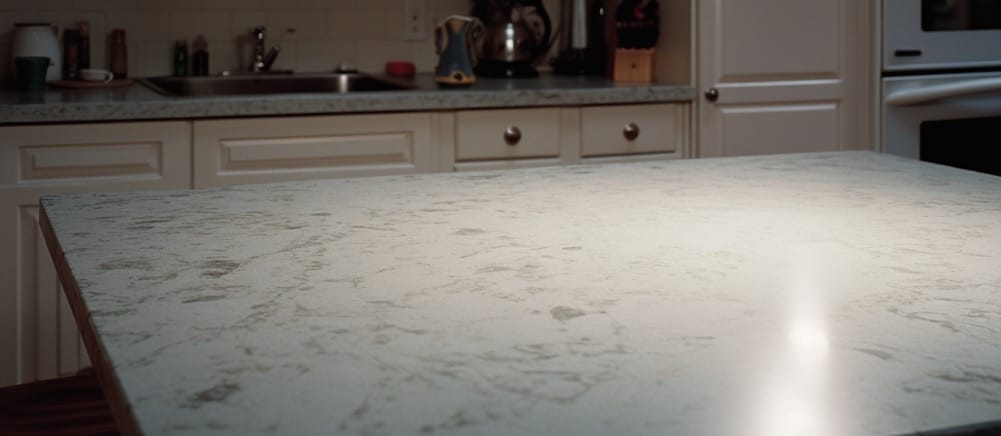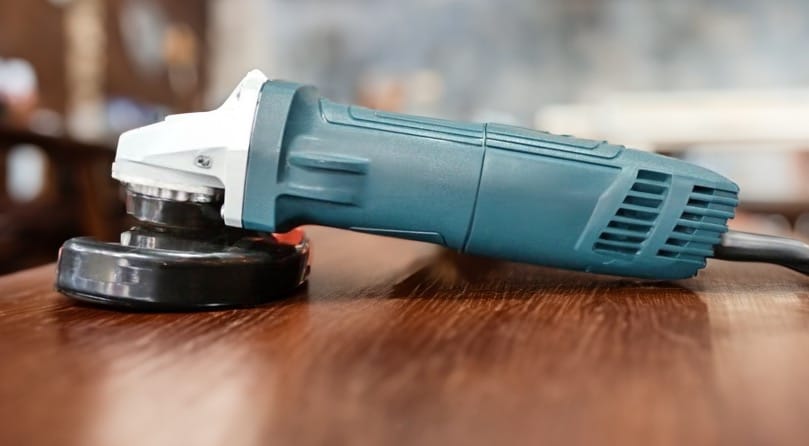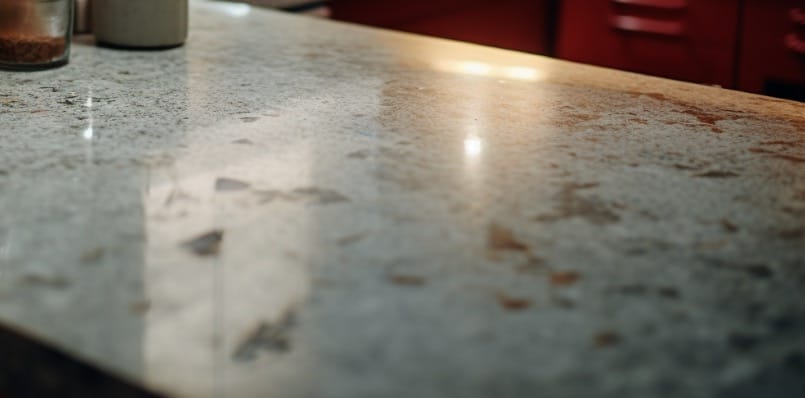A quartz countertop can elevate the look of any kitchen, but let’s face it—cutting and installing one is no walk in the park.
It’s a task that demands precision, the right tools, and a fair bit of know-how to avoid costly mistakes or even health risks.
That’s where this guide comes in. I’ll take you through the intricate process of cutting quartz with an angle grinder, step-by-step.
From selecting the right angle grinder and blade to ensuring you’re protected from the toxic dust that cutting quartz can produce, I’ve got you covered.
So, if you’re up for the challenge, read on.
Understanding Quartz
Quartz is often hailed as the Superman of countertops, and for good reason.
Unlike steel, quartz is composed of 80-90% crystals and 10-20% resin, it’s not just pretty; it’s a durable and reliable composite material designed to last for decades.
But here’s the catch—cutting quartz presents its own set of challenges, making this task far from simple or easy.
The Risks of Cutting Quartz
Before you even think about making that first cut with your angle grinder, it’s crucial to understand the risks associated with cutting quartz.
The dust produced during the cutting process is not just any dust; it’s potentially toxic. When inhaled, these tiny particles can lead to serious health issues.
That’s why protective gear like a respirator, eyewear, and gloves are non-negotiables when you’re working with quartz.
Type of Angle Grinder Needed to Cut Quartz
Now, let’s talk angle grinders.
The Right Power and Size
The angle grinder you choose should not only be comfortable to handle but also have sufficient power to cut thorugh quartz — I’d say ideally, at least 1100 watts for a standard kitchen countertop.
This ensures that the machine can withstand the resistance offered by the dense quartz material without overheating or slowing down.
As for the size, it largely depends on the scope of your project:
- 4-4.5 inches: Suitable for smaller projects or tight spaces. However, it may require more passes to cut through the quartz.
- 5-7 inches: Ideal for medium-sized slabs and offers a good balance between control and speed.
- 9 inches: Best for large slabs but can be unwieldy and harder to control, so it’s recommended for those who have experience using angle grinders.
Choosing the Angle Grinder’s Right Blade
Next, you’ll need a diamond saw blade for your angle grinder, which is robust enough to cut through quartz effortlessly.
There are different types to consider:
- Continuous Rim Blades: These are perfect for making clean, chip-free cuts, especially in visible areas like edges.
- Segmented Rim Blades: Faster in cutting but may leave a rougher finish. Suitable for initial quartz cuts that you plan to refine later.
- Turbo Rim Blades: A middle-ground option offering both speed and a relatively smooth finish on quartz.
Preparing and Measuring the Quartz Slab
Before using your angle grinder to cut through a quartz slab, you want to make sure you are doing it on a stable surface, cause if you’re cutting on a wobbly table things can get wrong really fast.
Securing the quartz slab comes next. To do this, just use a couple of clamps to keep that quartz in its place.
Now pull out your trusty measuring tape and carefully measuring your quartz slab, marking where you’ll cut. Remember to account for the overhangs!
To round up, you’ll want to create a template by planning out your cuts. Use something flexible like balsa wood or rigid cardboard. It’s a simple aid that’ll let you achieve:
- Double-check your measurements and visualize the end result, reducing the risk of costly mistakes.
- Make quicker, more confident cuts, saving you both time and effort.
How to Cut Quartz with Angle Grinder?
Setting Up the Angle Grinder
The first step is to set up your angle grinder.
Ensure that the markings on your quartz slab align perfectly with the direction of the grinder’s blade. This alignment is crucial because it sets the stage for the entire cutting process.
If your grinder and markings are in sync, you’re less likely to make errors, which means a smoother cut and less material wastage.
Fixing the Straight Edge
Next, position a straight edge along the markings on your quartz. This straight edge acts as your guide, ensuring that your cut remains true to the line you’ve marked.
Making the Cut
Now, let’s get down to the actual cutting. Here’s how to go about it:
- Starting the Grinder: Pull the trigger to start the grinder and wait for the blade to reach full speed. This ensures that you’re cutting at optimal power, reducing the chances of chipping or cracking the quartz.
- Aligning the Grinder: Make sure the blade and the straight edge are perfectly aligned. This is where your setup pays off, as proper alignment ensures a clean, straight cut.
- Executing the Cut: Slow and steady is the mantra here. Let the grinder do the work and guide it smoothly along the line. Pushing too hard can lead to blade wobbling or overheating, so patience is key.
- Stabilizing the Blade: Keep the blade stable throughout the cut. Rushing can lead to mistakes that are both costly and time-consuming to fix.
Sinkhole and Edge Rounding
If you’re cutting quartz to make a kitchen countertop, the process of cutting the sinkhole demands extra precision since it’s a highly visible area.
If you have a router, it’s an excellent tool for rounding off those sharp edges for a polished look. If not, don’t worry—a sanding pad attached to your angle grinder can achieve a similar effect.
Inspection and Installation
Even though this doesn’t have anything to do with cutting quartz with an angle grinder I thought talking about installing and inspecting your cut quartz slab might be helpful:
Inspection
So, the first thing I do after cutting is inspect my work up close.
The cut needs to be smooth and straight. If it’s not, no big deal. I simply make the necessary adjustments and move on.
Now, to make that cut as smooth as possible, I use diamond polishing pads. These are very affordable and can elevate the look of the quartz to a whole new level.
Installation
Once I’ve got that smooth finish, it’s installation time. This part can be a bit tricky as quartz slabs are heavy.
So, if possible, I get a friend to help me lift and position the slab. If that’s not an option, professional help is just a phone call away.
When it comes to installation, I’m extra careful, especially around the edges. Quartz can chip or even break if hit on the edge.
Frequently Asked Questions
Can I cut a quartz countertop with an angle grinder?
Yes, you can cut a quartz countertop with an angle grinder, and this article is a living proof of that. The key is to use the right tools and follow a meticulous process I just described. Make sure you’ve got an angle grinder with at least 1100 watts of power and a diamond saw blade specifically designed for cutting quartz.
Can quartz be cut on an angle?
Yes, quartz can be cut on an angle, but it requires a bit more skill and precision. The angle grinder and diamond blade combo still works wonders here. The trick is to maintain a consistent angle throughout the cut, which is where a good straight edge guide comes in handy. Take it slow, keep your hands steady, and you’ll achieve that angled cut you’re aiming for.
Is quartz harder to cut than granite?
In my experience, quartz isn’t necessarily harder to cut than granite, but it does present its own set of challenges. Both materials are tough and durable, but quartz is a composite, made of crystals and resin, which can make it a bit more forgiving during the cutting process. However, the resin component also means you’ll need to take extra precautions against inhaling toxic dust. So, while the cutting might be on par with granite, the safety measures you’ll need to take are a bit more stringent for quartz.




